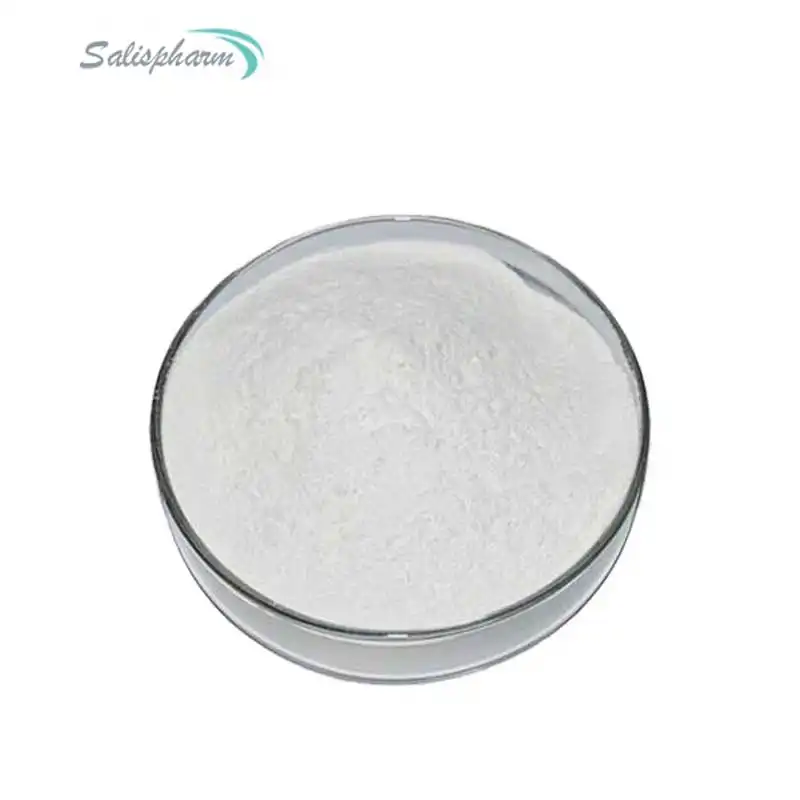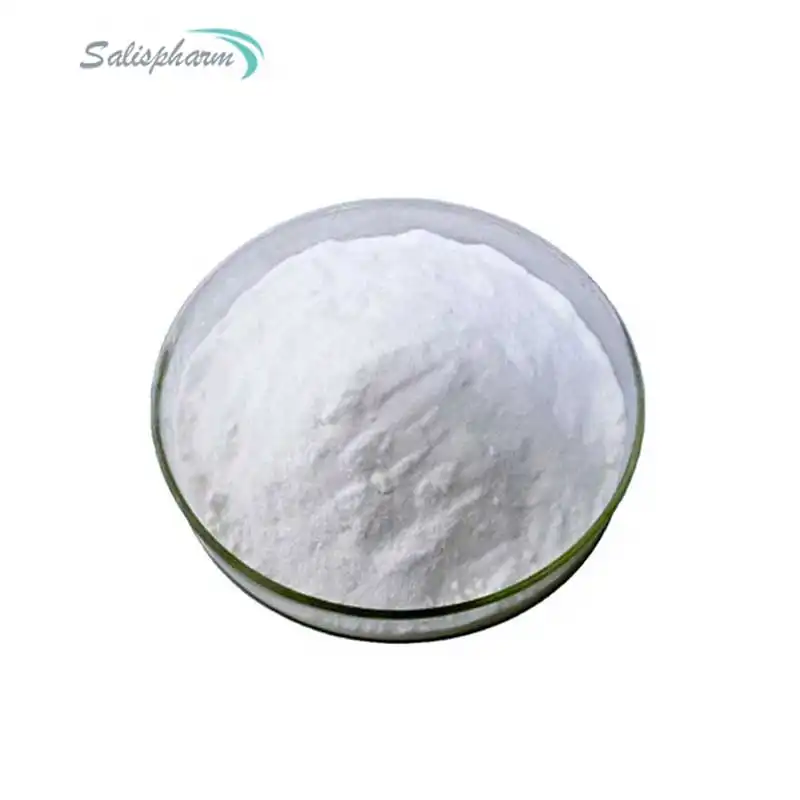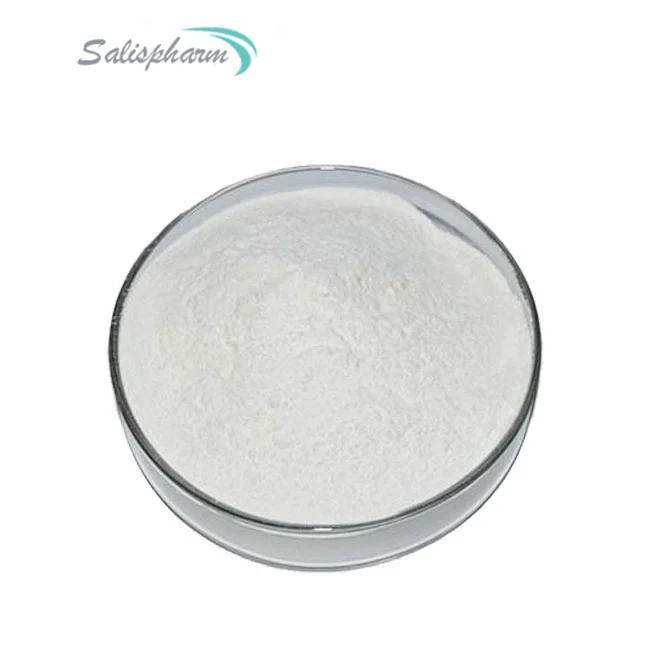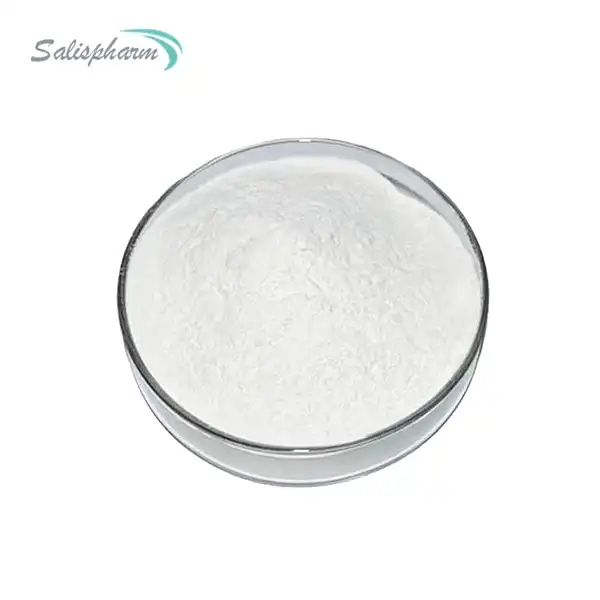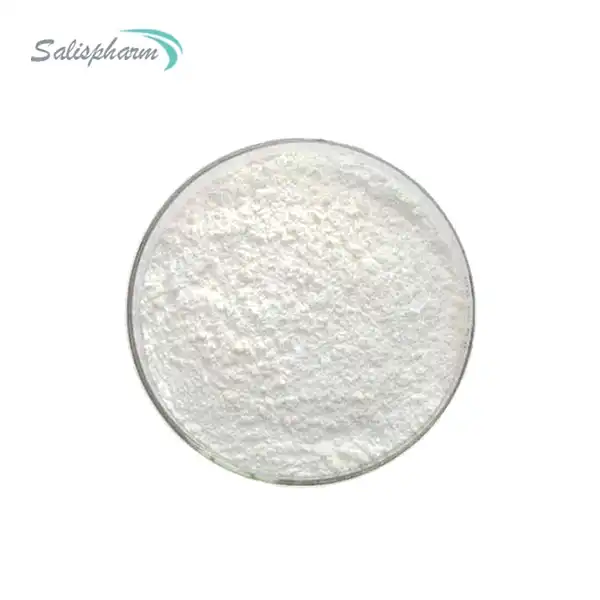Lomefloxacin powder is a potent antibiotic belonging to the fluoroquinolone class of drugs. It works by targeting and inhibiting bacterial DNA gyrase and topoisomerase IV enzymes, which are essential for bacterial DNA replication and cell division. By disrupting these crucial processes, lomefloxacin effectively halts the growth and reproduction of susceptible bacteria, leading to their eventual death. This mechanism of action makes lomefloxacin a broad-spectrum antibiotic, capable of combating various types of bacterial infections.
What are the common uses of lomefloxacin in medical treatment?
Lomefloxacin powder has found applications in treating a wide range of bacterial infections due to its broad-spectrum activity. Its primary uses include:
1. Urinary Tract Infections (UTIs): Lomefloxacin is particularly effective against common uropathogens such as Escherichia coli, Klebsiella pneumoniae, and Proteus mirabilis. It is often prescribed for both acute and chronic UTIs, including complicated cases involving catheterization or structural abnormalities of the urinary tract.
2. Respiratory Tract Infections: The antibiotic has shown efficacy in treating various respiratory infections, including acute bronchitis, community-acquired pneumonia, and exacerbations of chronic bronchitis. Its ability to penetrate lung tissue makes it a valuable option for these conditions.
3. Skin and Soft Tissue Infections: Lomefloxacin can be used to treat infections of the skin and underlying tissues caused by susceptible bacteria. This includes cellulitis, wound infections, and certain types of abscesses.
4. Prostatitis: In men, lomefloxacin has been found effective in treating bacterial prostatitis, both acute and chronic forms. Its ability to penetrate prostate tissue contributes to its efficacy in this area.
5. Sexually Transmitted Infections: Some sexually transmitted infections, particularly those caused by susceptible strains of Neisseria gonorrhoeae, can be treated with lomefloxacin.
6. Ophthalmic Infections: Lomefloxacin is also available in ophthalmic formulations for treating bacterial eye infections, including conjunctivitis and corneal ulcers.
7. Prophylaxis: In certain cases, lomefloxacin may be used prophylactically to prevent infections in high-risk situations, such as before certain surgical procedures or in immunocompromised patients.
The versatility of lomefloxacin in treating various infections stems from its broad-spectrum activity and favorable pharmacokinetic properties. It demonstrates good tissue penetration, allowing it to reach infection sites effectively. Additionally, its once-daily dosing regimen can improve patient compliance compared to antibiotics requiring more frequent administration.
However, it's important to note that the use of Lomefloxacin Powder, like other fluoroquinolones, should be judicious and in line with antimicrobial stewardship principles. This helps prevent the development of antibiotic resistance and preserves the effectiveness of this important class of antibiotics for future use.
How does lomefloxacin compare to other fluoroquinolone antibiotics?
Lomefloxacin is part of the fluoroquinolone family of antibiotics, which includes other well-known drugs such as ciprofloxacin, levofloxacin, and moxifloxacin. While these antibiotics share a common mechanism of action, there are several factors that distinguish lomefloxacin from its counterparts:
1. Spectrum of Activity:
Lomefloxacin has a broad spectrum of activity, similar to other fluoroquinolones. However, it shows particularly strong activity against gram-negative bacteria, especially those commonly involved in urinary tract infections. Compared to earlier fluoroquinolones like norfloxacin, lomefloxacin demonstrates improved activity against some gram-positive bacteria, although it may not be as potent as newer generations of fluoroquinolones (e.g., moxifloxacin) in this regard.
2. Pharmacokinetics:
One of the notable features of lomefloxacin is its long half-life, which allows for once-daily dosing. This can be an advantage in terms of patient compliance compared to antibiotics that require multiple daily doses. The drug also achieves high concentrations in urine, making it particularly suitable for treating urinary tract infections.
3. Tissue Penetration:
Lomefloxacin shows good penetration into various tissues, including the prostate and lungs. This property makes it effective for treating prostatitis and certain respiratory infections. However, some newer fluoroquinolones may have even better tissue penetration profiles.
4. Photosensitivity:
One characteristic that sets lomefloxacin apart is its higher potential for causing photosensitivity reactions compared to many other fluoroquinolones. Patients taking Lomefloxacin Powder need to be particularly cautious about sun exposure and are often advised to use sun protection measures.
5. Resistance Profile:
The resistance profile of lomefloxacin is generally similar to that of other fluoroquinolones. However, as with all antibiotics, local resistance patterns can vary, and susceptibility testing is often necessary to guide treatment decisions.
6. Safety Profile:
While all fluoroquinolones share certain class-wide adverse effects, the specific safety profile can vary among individual drugs. Lomefloxacin's safety profile is generally similar to other fluoroquinolones, but it may have a lower risk of certain adverse effects (such as CNS toxicity) compared to some others in its class.
7. Approved Indications:
The specific approved indications for lomefloxacin may vary by country and regulatory agency. In general, it is approved for a range of infections, with a particular focus on urinary tract and respiratory infections. However, some newer fluoroquinolones may have broader approved indications.
8. Cost and Availability:
Lomefloxacin may be less widely available than some other fluoroquinolones, particularly in countries where newer generations of these antibiotics have become more prevalent. This can affect its cost and accessibility in different healthcare settings.
9. Clinical Experience:
There is a wealth of clinical experience with lomefloxacin, as it has been in use for several decades. This long-term use provides valuable data on its efficacy and safety profile. However, newer fluoroquinolones may have more recent and extensive clinical trial data for certain indications.
10. Environmental Impact:
Like other fluoroquinolones, lomefloxacin can have environmental impacts when excreted into wastewater. However, the specific environmental persistence and effects may vary among different fluoroquinolones.
In conclusion, while lomefloxacin shares many characteristics with other fluoroquinolones, its specific pharmacokinetic properties, tissue penetration profile, and long history of use in certain indications (particularly urinary tract infections) give it a distinct place within this antibiotic class. The choice between lomefloxacin and other fluoroquinolones often depends on the specific infection being treated, local resistance patterns, patient factors, and prescriber preference.
What is the recommended dosage for lomefloxacin powder?
The recommended dosage of lomefloxacin powder can vary depending on several factors, including the type and severity of the infection, the patient's age, renal function, and other individual characteristics. However, there are general guidelines that are typically followed:
1. Standard Adult Dosage:
For most infections in adults with normal renal function, the typical dose of lomefloxacin is 400 mg once daily. This once-daily dosing is one of the advantages of lomefloxacin, as it can improve patient compliance compared to antibiotics that require multiple daily doses.
2. Duration of Treatment:
The duration of treatment with lomefloxacin varies depending on the type and severity of the infection:
- For uncomplicated urinary tract infections, a 3-day course may be sufficient.
- For more complicated infections, including respiratory tract infections, treatment may last 7-14 days.
- Some chronic or severe infections may require longer treatment periods, as determined by the healthcare provider.
3. Dosage Adjustments:
a) Renal Impairment: Patients with reduced kidney function may require dosage adjustments. For instance:
- For patients with a creatinine clearance of 10-40 mL/min, the recommended dose is typically 400 mg every 48 hours.
- For patients with a creatinine clearance <10 mL/min, the dose may be reduced to 400 mg every 72 hours.
b) Elderly Patients: While specific dosage adjustments are not always necessary for elderly patients, caution is advised due to the potential for decreased renal function in this population.
c) Hepatic Impairment: No specific dosage adjustments are typically required for patients with liver impairment, as lomefloxacin is primarily excreted by the kidneys.
4. Special Considerations:
- For complicated urinary tract infections or pyelonephritis, some guidelines suggest an initial dose of 400 mg, followed by 200-400 mg daily for 10-14 days.
- In the treatment of acute bacterial exacerbations of chronic bronchitis, a typical regimen might be 400 mg once daily for 7 days.
- For prophylaxis before transurethral surgical procedures, a single dose of 400 mg may be given 2-6 hours before the procedure.
5. Administration:
Lomefloxacin powder is typically reconstituted into a solution or suspension for oral administration. It should be taken with a full glass of water, and patients are often advised to maintain adequate hydration throughout the treatment period.
6. Timing of Doses:
Lomefloxacin can be taken without regard to meals. However, it should be taken at least 4 hours before or 2 hours after the ingestion of products containing aluminum, magnesium, iron, or zinc (including antacids and multivitamins), as these can interfere with the absorption of the antibiotic.
7. Missed Doses:
If a dose is missed, it should be taken as soon as remembered, unless it's close to the time for the next scheduled dose. In that case, the missed dose should be skipped, and the regular dosing schedule resumed. Doubling up on doses to make up for a missed one is not recommended.
8. Pediatric Use:
Lomefloxacin, like other fluoroquinolones, is generally not recommended for use in children and adolescents due to the potential risk of adverse effects on developing cartilage. However, in certain severe infections where the benefits outweigh the risks, it may be used under close medical supervision.
9. Ophthalmic Use:
For eye infections, Lomefloxacin Powder is available as an ophthalmic solution. The typical dosing for this formulation is 1-2 drops in the affected eye(s) every 2-4 hours while awake for the first two days, then 1-2 drops four times daily for the next 5 days.
It's crucial to emphasize that these are general guidelines, and the actual prescribed dosage should always be determined by a healthcare professional based on the individual patient's condition and circumstances. Patients should always follow their healthcare provider's instructions regarding dosage and duration of treatment. Additionally, it's important to complete the full course of antibiotics as prescribed, even if symptoms improve before the medication is finished, to prevent the development of antibiotic-resistant bacteria.
If you are also interested in this product and want to know more product details, or want to know about other related products, please feel free to contact iceyqiang@aliyun.com.
References
1. Monk, J. P., & Campoli-Richards, D. M. (1987). Lomefloxacin. Drugs, 34(4), 454-477.
2. Davis, R., & Bryson, H. M. (1994). Lomefloxacin. Drugs, 47(4), 677-700.
3. Hooper, D. C., & Strahilevitz, J. (2016). Quinolones. In Mandell, Douglas, and Bennett's Principles and Practice of Infectious Diseases (pp. 419-439). Elsevier.
4. Naber, K. G., & Adam, D. (1998). Classification of fluoroquinolones. International journal of antimicrobial agents, 10(4), 255-257.
5. Andriole, V. T. (2005). The quinolones: past, present, and future. Clinical infectious diseases, 41(Supplement_2), S113-S119.
6. Oliphant, C. M., & Green, G. M. (2002). Quinolones: a comprehensive review. American family physician, 65(3), 455-464.
7. Emmerson, A. M., & Jones, A. M. (2003). The quinolones: decades of development and use. Journal of Antimicrobial Chemotherapy, 51(suppl_1), 13-20.
8. Owens, R. C., & Ambrose, P. G. (2005). Antimicrobial safety: focus on fluoroquinolones. Clinical infectious diseases, 41(Supplement_2), S144-S157.
9. Lode, H., Borner, K., & Koeppe, P. (1998). Pharmacodynamics of fluoroquinolones. Clinical infectious diseases, 27(1), 33-39.
10. Blondeau, J. M. (2004). Fluoroquinolones: mechanism of action, classification, and development of resistance. Survey of ophthalmology, 49(2), S73-S78.



